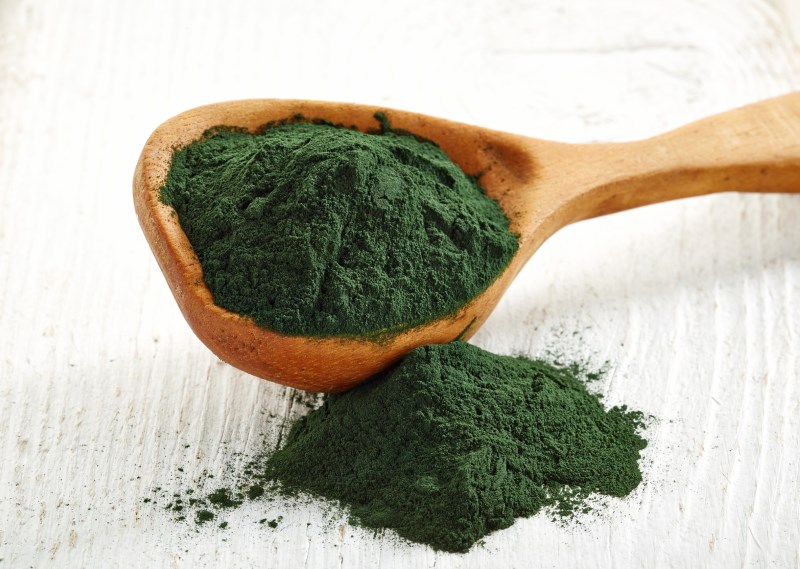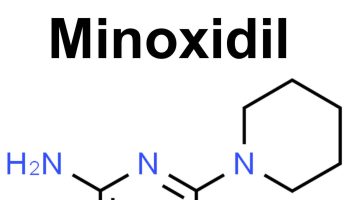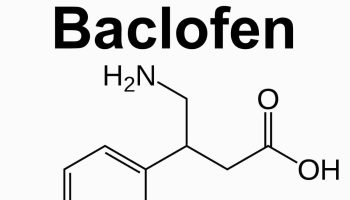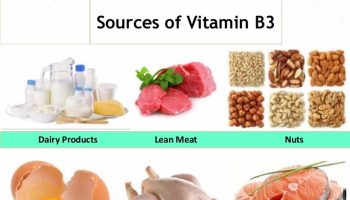
What is Spirulina
Spirulina is a type of bacteria (blue-green algae) called filamentous cyanobacterium, which is often referred to as blue-green algae, that is incredibly high in protein and a good source of antioxidants, B-vitamins and other nutrients 1, 2, 3.
Spirulina microalgae (Spirulina platensis, Spirulina maxima, Spirulina fusiformis) is considered as a valuable additional food source of some macro- and micronutrients including high quality protein, iron, gamma-linolenic fatty acid, carotenoids, vitamins B1 and B2. When harvested correctly from non-contaminated ponds and bodies of water, it is one of the most potent nutrient sources available.
Spirulina microalgae occur naturally in tropical and subtropical alkaline hot lakes with high pH values and high salt concentrations, like carbonate and bicarbonate. Two species, spirulina platensis and spirulina maxima, are mainly present, the first occurring in Africa, Asia, and South America, whereas the second is confined to Central America. Cultivation of Spirulina on a large scale started 30 years ago in Mexico and China, and later in other parts of the world, owing to the easy conditions for cultivation. Most cultivated Spirulina is produced in open channel raceway ponds, with paddle-wheels used to agitate the water. The largest commercial producers of Spirulina are located in the USA, Thailand, India, Taiwan, China, Bangladesh, Pakistan, Burma (Myanmar), Greece, and Chile. Spirulina is primarily known across the world for its potential nutritional value. There is a concern about toxins produced by cyanobacteria 4. Microcystins, produced by Microcystis sp., were in the news as they caused acute liver failure in more than 100 Brazilian haemodialysis patients. The problem arose due to the use of a contaminated water reservoir, whose filters and carbon adsorption tanks had not been changed for a long time.
Recently, it has experienced a surge in popularity as a dietary supplement. Spirulina is available in capsules, tablets, and powder and has been incorporated in certain foods and beverages such as energy bars, popcorn, and smoothies.
Phycocyanin is an antioxidant substance also gives spirulina its unique blue-green color. Phycocyanin can fight free radicals and inhibit production of inflammatory signalling molecules, providing impressive antioxidant and anti-inflammatory effects.
Spirulina has been shown to lower total cholesterol, LDL cholesterol and triglycerides, while raising HDL (the “good”) cholesterol.
Spirulina may have some anti-cancer properties, especially against a type of precancerous lesion called OSMF (oral submucous fibrosis).
Spirulina supplements have been shown to be effective against allergic rhinitis, helping to reduce various symptoms.

In Spirulina, cells are aggregated into filaments that tend to form spirals. Note the blue-green colour typical of cyanobacteria.
A single tablespoon (7 grams) of dried spirulina powder contains:
- Protein: 4 grams, though with reduced amounts of methionine, cysteine, and lysine when compared to meat, eggs, and milk, although superior to typical plant protein, such as that from legumes 5, 6, 7, 8.
- Vitamin B1 (Thiamin): 11% of the RDA.
- Vitamin B2 (Riboflavin): 15% of the RDA.
- Vitamin B3 (Niacin): 4% of the RDA.
- Copper: 21% of the RDA.
- Iron: 11% of the RDA.
- It also contains decent amounts of magnesium, potassium and manganese, and small amounts of almost every other nutrient that we need.
- The American Dietetic Association and Dieticians of Canada, in their position paper on vegetarian diets, state that spirulina cannot be counted on as a reliable source of active vitamin B12 9.
Spirulina is a type of blue-green algae that grows in both salty and fresh water. It may be the single most nutrient-dense food on earth.

Image of Spirulina algae. Most Spirulina cells, after their exsiccation and transformation into marketed products, are fragmented, but the original characteristics useful for identification are still evident. (Source 10).
Spirulina Side Effects
Reported side effects associated with Spirulina consumption are insomnia and gastric problems with uncertain or unlikely causality 11 and only few cases of severe side effects have been reported, including a case of rhabdomyolysis after the consumption of 3 g/day for 1 month 12. Two cases of anaphylaxis caused by Spirulina tablets were reported 13, 14 of which one in a 17-year-old male who had a history of atopic dermatitis, asthma, allergic rhinitis, and a possible pollen-food syndrome (oral allergy symptoms to tomato and cucumber) 14. Three cases of autoimmune-mediated skin damage were reported, of which one in a 82-year-old woman 15, whereas the other two cases were observed in subjects consuming Spirulina as ingredient of multicomponent-nutraceuticals (organic cayenne pepper, ethylsulfonylmethane, and the algae Aphanizomenon flos-aquae and Spirulina or Ginseng, Ginkgo biloba, and Spirulina) 16. In this regard, it is well known that plant-food and herbal supplements could have adverse effects, such as hepatotoxicity and autoimmune hepatitis 17. Besides, the two cases described by Lee and Werth 18 involved a 57-year-old man with known pemphigus vulgaris and a 45-year-old woman with a history of hypertension, chronic migraines and fibromyalgia. Furthermore, a case report of hepatotoxicity involved a 52-year-old Japanese man who had a history of hypertension, hyperlipidemia and type 2 diabetes (T2D) and taking medications (amlodipine besilate, simvastatin, and acarbose) 19. In this context, potential food-drug interactions have been hypothesized for Spirulina 20 and for phenolic phytochemicals 21, 22, 23. Therefore, Spirulina should be ingested with caution in subjects with diseases, in particular in patients in treatment with substrates of cytochrome P450 enzymes, such as immunosuppressant, antihypertensive, and lipid lowering drugs 24, 25, 21, 22, 23.
Spirulina and Health Benefits
Numerous studies had reported health benefits of Spirulina in some diseases such as anemia, diabetes, arthritis, cancer and cardiovascular disorders 2. On the other hand, it has been claimed that Spirulina has potential positive effects in therapeutic management of chronic metabolic and non-metabolic disorders 26.
Moreover, despite the fact that Spirulina might represent a functional food with potential beneficial effects on human health, the human interventions used supplements 27, 28, 29, 30, 31, 32, 33, 34, 35, 36, 37, 38, 39, 40, (Ismail M., Hossain M. F., Tanu A. R., Shekhar H. U. Effect of spirulina intervention on oxidative stress, antioxidant status, and lipid profile in chronic obstructive pulmonary disease patients. BioMed Research International. 2015;2015:7. doi: 10.1155/2015/486120.486120. https://www.ncbi.nlm.nih.gov/pmc/articles/PMC4320919/()). Although the tested doses (1–20 g/day) in these studies, were not greater than the maximum acceptable percentage (10%) of Spirulina in functional foods, no data are available on the efficacy of Spirulina containing foods. Therefore, the healthy effect of food containing Spirulina should be further evaluated.
Impact of daily supplementation of Spirulina platensis on the immune system of HIV patients
This study 41 was performed, to assess the potential effects of 10 grams of daily supplementation of Spirulina platensis with a local balance diet on the level of CD4 cells count and viral load during six months by treatment naïve HIV–infected persons. 169 patients in Cameroon, Africa, aged between 18–65 years, among them 50 men and 119 female HIV–infected naïve to antiretroviral treatment and with CD4 count ≥400 cells/μL were eligible. Patients who had their CD4 below 400 cells/μL during the follow-up were excluded. They were divided into two groups: 87 subjects to the control group (first group) and 82 subjects to the intervention group (second group). The patients of the first group were advised who to take a local balance diet while patients of the second group were asked to add 10 g of S. platensis to their usual diet during the first six months. The S. platensis was given in package of powder doses of 10 grams per day. The next six months were for the follow-up without S. platensis powder. The authors concluded that a daily supplementation with Spirulina platensis to diet combined with a reasonable balanced diet has significantly increased the CD4 cells and reduced the viral load after 6 months. These results showed that spirulina supplementation intake positively and significantly stimulated the immune system and inhibit the replication of viral on HIV-l naïve patients. Further studies are recommended among a large specific group of people infected by the HIV in order to investigate the mechanisms involved on the effect of Spirulina platensis on immune system.
Impact of daily supplementation of Spirulina platensis on the weight loss, appetite, lipid profile in obesity
This study 42 was performed, to determine the effects of Spirulina platensis on anthropometric parameters, serum lipids, appetite and serum Vascular Endothelial Growth Factor (VEGF) in obese individuals.
In the current study sixty four obese individuals aged 20–50 years were enrolled and randomly allocated into two groups of intervention and placebo. Intervention group (n = 29) received each 500 mg of the Spirulina platensis a twice-daily dosage while the control group (n = 27) received two pills daily starch for 12 weeks. Anthropometric parameters and serum VEGF and lipid profile were measured in fasting blood samples at the beginning and end of the study period. Dietary intakes were assessed by a 24-h recall method and appetite was measured using standard visual analogue scale.
Diet and physical activity play an important role in regulating weight.As observed in human adipose tissue, one mechanism for an increased inflammatory response may arise through activation of the innate immune system 43. Adipose tissue contains abundant endothelial cells that could secrete angiogenic factors, such as vascular endothelial growth factor (VEGF) 44. Vascular endothelial growth factor (VEGF) is an important angiogenic factor implicated in normal and pathological vessel formation 45, which is an important biomarker in obesity and obesity-related cancer progression 46. Increased serum vascular endothelial growth factor concentrations due to visceral fat accumulation could also influence vascular endothelial function 45.
In this study, the authors mentioned a significant decrease in appetite and consequently weight and BMI (body mass index) in intervention group. The weight reducing effects of Spirulina platensis could be attributed to its appetite reducing effect as observed in the current study. A recent study demonstrated that three months of taking of 2 g/day Spirulina improves BMI and weight as well as blood pressure in overweight patients with hypertension without evidence of cardiovascular disease 47. In the mentioned study, gender and age were considered as parameters with confounding effects and the results were adjusted for these confounders.
In conclusion, the findings of the present study 42 demonstrated that Spirulina platensis supplementation at a dose of 1 g daily was effective in weight regulation, serum total cholesterol and appetite reduction. Several limitations of the current study should also be mentioned; low sample size and short period of treatment could be involved in minor discrepancy of their findings with their hypothesis of change in serum VEGF or other lipids. Although the current study was the first one evaluating the healthful beneficial effects of Spirulina platensis in obesity. Further studies with higher dose, sample sized and study duration are warranted.
Hawaiian Spirulina and Blood Pressure
In another study 48, the findings of taking 2 grams of Hawaiian maxima (Spirulina maxima) for three months versus placebo, involving 40 patients with hypertension, showed there was significant reduction in SBP (systolic blood pressure) and SI (stiffness index) was observed. The patients in the spirulina group also showed significant reductions in BMI (26.9 ± 3.1 vs. 25.0 ± 2.7 kg/m2 (placebo), p = 0.0032) and weight loss (75.5 ± 11.8 vs. 70.5 ± 10.3 kg (placebo), p < 0.001). The authors added that spirulina can be used as an adjunctive therapy for hypertension in overweight people. The therapeutic role of spirulina administration needs further investigation. Even though the healthy properties of functional foods and nutraceuticals still need to be fully elucidated, available data suggest that well-designed supplements, containing the better ratio of omega-3 polyunsaturated fatty acids and antioxidants, specific probiotic strains, and selected polyphenols and prebiotics, could be useful in metabolic syndrome prevention and treatment 49.
References- Sánchez M, Bernal-Castillo J, Rozo C, Rodríguez I. Spirulina (Arthrospira): an edible microorganism: a review. Univ Sci. 2003;8(1):7–24.
- Chu W-L, Lim Y-W, Radhakrishnan AK, Lim P-E. Protective effect of aqueous extract from Spirulina Platensis against cell death induced by free radicals. BMC Complementary Alternat Med. 2010;10(1):53–61. doi: 10.1186/1472-6882-10-53. https://www.ncbi.nlm.nih.gov/pmc/articles/PMC2954939/
- Sigamani S, Ramamurthy D, Natarajan H. A review on potential biotechnological applications of Microalgae. J App Pharm Sci. 2016;6(8):179–184. doi: 10.7324/JAPS.2016.60829.
- Nyenje M.E., Ndip R.K. The Challenges of foodborne pathogens and antimicrobial chemotherapy: A global perspective. Afric. J. Microb. 2013;7:1158–1172.
- Habib M.A.B., Parvin M., Huntington T.C., Hasan M.R. A Review on Culture, Production and Use of Spirulina as Food for Humans and Feeds for Domestic Animals and Fish. Food and Agriculture Organization of the United Nations; Rome, Italy: 2008.
- Khan Z., Bhadouria P., Bisen P.S. Nutritional and therapeutic potential of Spirulina. Curr. Pharm. Biotechnol. 2005;6:373–379. doi: 10.2174/138920105774370607. https://www.ncbi.nlm.nih.gov/pubmed/16248810
- Kulpys J., Paulauskas E., Pilipavičius V., Stankevičius R. Influence of cyanobacteria Arthrospira (Spirulina) platensis biomass additive towards the body condition of lactation cows and biochemical milk indexes. Agron. Res. 2009;7:823–835.
- Heidarpour A., Fourouzandeh-Shahraki A.-D., Eghbalsaied S. Effects of Spirulina platensis on performance, digestibility and serum biochemical parameters of Holstein calves. Afr. J. Agric. Res. 2011;6:5061–5065.
- Position of the American Dietetic Association and Dietitians of Canada: Vegetarian diets. American Dietetic Association., Dietitians of Canada. J Am Diet Assoc. 2003 Jun; 103(6):748-65. https://www.ncbi.nlm.nih.gov/pubmed/12778049/
- Foods. 2016 Sep; 5(3): 54. Published online 2016 Aug 22. doi: 10.3390/foods5030054. Microalgae Nutraceuticals. https://www.ncbi.nlm.nih.gov/pmc/articles/PMC5302390/
- United States pharmacopeia safety evaluation of spirulina. Crit Rev Food Sci Nutr. 2011 Aug; 51(7):593-604. https://www.ncbi.nlm.nih.gov/pubmed/21793723/
- Acute rhabdomyolysis caused by Spirulina (Arthrospira platensis). Mazokopakis EE, Karefilakis CM, Tsartsalis AN, Milkas AN, Ganotakis ES. Phytomedicine. 2008 Jun; 15(6-7):525-7. https://www.ncbi.nlm.nih.gov/pubmed/18434120/
- First case report of anaphylaxis to spirulin: identification of phycocyanin as responsible allergen. Petrus M, Culerrier R, Campistron M, Barre A, Rougé P. Allergy. 2010 Jul; 65(7):924-5. https://www.ncbi.nlm.nih.gov/pubmed/19889119/. https://www.ncbi.nlm.nih.gov/pubmed/19889119/
- Anaphylaxis to Spirulina confirmed by skin prick test with ingredients of Spirulina tablets. Le TM, Knulst AC, Röckmann H. Food Chem Toxicol. 2014 Dec; 74():309-10. https://www.ncbi.nlm.nih.gov/pubmed/25445756/
- A mixed immunoblistering disorder exhibiting features of bullous pemphigoid and pemphigus foliaceus associated with Spirulina algae intake. Kraigher O, Wohl Y, Gat A, Brenner S. Int J Dermatol. 2008 Jan; 47(1):61-3. https://www.ncbi.nlm.nih.gov/pubmed/18173606/
- Activation of autoimmunity following use of immunostimulatory herbal supplements. Lee AN, Werth VP. Arch Dermatol. 2004 Jun; 140(6):723-7. https://www.ncbi.nlm.nih.gov/pubmed/15210464/
- Adverse effects of plant food supplements and botanical preparations: a systematic review with critical evaluation of causality. Di Lorenzo C, Ceschi A, Kupferschmidt H, Lüde S, De Souza Nascimento E, Dos Santos A, Colombo F, Frigerio G, Nørby K, Plumb J, Finglas P, Restani P Br J Clin Pharmacol. 2015 Apr; 79(4):578-92. https://www.ncbi.nlm.nih.gov/pubmed/25251944/
- Activation of autoimmunity following use of immunostimulatory herbal supplements. Lee AN, Werth VP. Arch Dermatol. 2004 Jun; 140(6):723-7.
- Spirulina-associated hepatotoxicity. Iwasa M, Yamamoto M, Tanaka Y, Kaito M, Adachi Y. Am J Gastroenterol. 2002 Dec; 97(12):3212-3.
- Inhibitory effects of spirulina platensis on carcinogen-activating cytochrome P450 isozymes and potential for drug interactions. Savranoglu S, Tumer TB. Int J Toxicol. 2013 Sep-Oct; 32(5):376-84.https://www.ncbi.nlm.nih.gov/pubmed/24082030/
- Association of flavonoid-rich foods and statins in the management of hypercholesterolemia: a dangerous or helpful combination ? Peluso I, Palmery M, Serafini M. Curr Drug Metab. 2015; 16(9):833-46. https://www.ncbi.nlm.nih.gov/pubmed/26467069/
- Peluso I., Palmery M. Is a flavonoid-rich diet with steamer cooking safe during calcineurin inhibitors therapy? Journal of Clinical Pharmacy and Therapeutics. 2014;39(5):471–474. doi: 10.1111/jcpt.12186. https://www.ncbi.nlm.nih.gov/pubmed/24938126
- Werba J. P., Misaka S., Giroli M. G., et al. Overview of green tea interaction with cardiovascular drugs. Current Pharmaceutical Design. 2015;21(9):1213–1219. doi: 10.2174/1381612820666141013135045. https://www.ncbi.nlm.nih.gov/pubmed/25312732
- Spirulina-associated hepatotoxicity. Iwasa M, Yamamoto M, Tanaka Y, Kaito M, Adachi Y. Am J Gastroenterol. 2002 Dec; 97(12):3212-3. https://www.ncbi.nlm.nih.gov/pubmed/12492223/
- Savranoglu S., Tumer T. B. Inhibitory effects of spirulina platensis on carcinogen-activating cytochrome P450 isozymes and potential for drug interactions. International Journal of Toxicology. 2013;32(5):376–384. doi: 10.1177/1091581813503887. https://www.ncbi.nlm.nih.gov/pubmed/24082030
- Iyer UM, Dhruv SA, Mani IU. Spirulina and its therapeutic implications as a food product. In Spirulina human nutrition and health. Edited by: Belay A, Gershwin ME. UK: CRC press, Taylor & Francis Publishing group; 2007. pp. 51–70.
- Hirahashi T., Matsumoto M., Hazeki K., Saeki Y., Ui M., Seya T. Activation of the human innate immune system by Spirulina: augmentation of interferon production and NK cytotoxicity by oral administration of hot water extract of Spirulina platensis. International Immunopharmacology. 2002;2(4):423–434. doi: 10.1016/s1567-5769(01)00166-7. https://www.ncbi.nlm.nih.gov/pubmed/11962722
- Nielsen C. H., Balachandran P., Christensen O., et al. Enhancement of natural killer cell activity in healthy subjects by Immulina®, a Spirulina extract enriched for Braun-type lipoproteins. Planta Medica. 2010;76(16):1802–1808. doi: 10.1055/s-0030-1250043. https://www.ncbi.nlm.nih.gov/pubmed/20560112
- Shyam R., Singh S. N., Vats P., et al. Wheat grass supplementation decreases oxidative stress in healthy subjects: a comparative study with Spirulina. Journal of Alternative and Complementary Medicine. 2007;13(8):789–791. doi: 10.1089/acm.2007.7137. https://www.ncbi.nlm.nih.gov/pubmed/17983333
- Park H.-J., Lee H.-S. The influence of obesity on the effects of spirulina supplementation in the human metabolic response of Korean elderly. Nutrition Research and Practice. 2016;10(4):418–423. doi: 10.4162/nrp.2016.10.4.418. https://www.ncbi.nlm.nih.gov/pmc/articles/PMC4958645/
- Park H. J., Lee Y. J., Ryu H. K., Kim M. H., Chung H. W., Kim W. Y. A randomized double-blind, placebo-controlled study to establish the effects of spirulina in elderly Koreans. Annals of Nutrition and Metabolism. 2008;52(4):322–328. doi: 10.1159/000151486. https://www.ncbi.nlm.nih.gov/pubmed/18714150
- Torres-Durán P. V., Ferreira-Hermosillo A., Ramos-Jiménez A., Hernández-Torres R. P., Juárez-Oropeza M. A. Effect of spirulina maxima on postprandial lipemia in young runners: a preliminary report. Journal of Medicinal Food. 2012;15(8):753–757. doi: 10.1089/jmf.2011.0309. https://www.ncbi.nlm.nih.gov/pmc/articles/PMC3407385/
- Simpore J., Zongo F., Kabore F., et al. Nutrition rehabilitation of HIV-infected and HIV-negative undernourished children utilizing spirulina. Annals of Nutrition and Metabolism. 2005;49(6):373–380. doi: 10.1159/000088889. https://www.ncbi.nlm.nih.gov/pubmed/16219988
- Teas J., Irhimeh M. R. Dietary algae and HIV/AIDS: proof of concept clinical data. Journal of Applied Phycology. 2012;24(3):575–582. doi: 10.1007/s10811-011-9766-0. https://www.ncbi.nlm.nih.gov/pmc/articles/PMC3354323/
- Ngo-Matip M.-E., Pieme C. A., Azabji-Kenfack M., et al. Impact of daily supplementation of Spirulina platensis on the immune system of naïve HIV-1 patients in Cameroon: a 12-months single blind, randomized, multicenter trial. Nutrition Journal. 2015;14, article 70 doi: 10.1186/s12937-015-0058-4. https://www.ncbi.nlm.nih.gov/pmc/articles/PMC4508814/
- Azabji-Kenfack M., Dikosso S. E., Loni E. G., et al. Potential of spirulina platensis as a nutritional supplement in malnourished HIV-infected adults in Sub-Saharan Africa: a randomised, single-blind study. Nutrition and Metabolic Insights. 2011;4:29–37. doi: 10.4137/NMI.S5862. https://www.ncbi.nlm.nih.gov/pmc/articles/PMC3738485/
- Yamani E., Kaba-Mebri J., Mouala C., Gresenguet G., Rey J. L. Use of spirul in a supplement fornutritional management of HIV-infected patients: study in Bangui, Central African Republic. Medecine Tropicale. 2009;69(1):66–70. https://www.ncbi.nlm.nih.gov/pubmed/19499738
- Winter F. S., Emakam F., Kfutwah A., Hermann J., Azabji-Kenfack M., Krawinkel M. B. The effect of Arthrospira platensis capsules on CD4 T-Cells and antioxidative capacity in a randomized pilot study of adult women infected with human immunodeficiency virus not under HAART in Yaoundé, Cameroon. Nutrients. 2014;6(7):2973–2986. doi: 10.3390/nu6072973. https://www.ncbi.nlm.nih.gov/pmc/articles/PMC4113773/
- Lee E. H., Park J., Choi Y., Huh K., Kim W. A randomized study to establish the effects of spirulina in type 2 diabetes mellitus patients. Nutrition Research and Practice. 2008;2(4):295–300. doi: 10.4162/nrp.2008.2.4.295. https://www.ncbi.nlm.nih.gov/pmc/articles/PMC2788188/
- Mao T. K., Van De Water J., Gershwin M. E. Effects of a Spirulina-based dietary supplement on cytokine production from allergic rhinitis patients. Journal of Medicinal Food. 2005;8(1):27–30. doi: 10.1089/jmf.2005.8.27. https://www.ncbi.nlm.nih.gov/pubmed/15857205
- Nutr J. 2015; 14: 70. Published online 2015 Jul 21. doi: 10.1186/s12937-015-0058-4. Impact of daily supplementation of Spirulina platensis on the immune system of naïve HIV-1 patients in Cameroon: a 12-months single blind, randomized, multicenter trial. https://www.ncbi.nlm.nih.gov/pmc/articles/PMC4508814/
- BMC Complement Altern Med. 2017 Apr 21;17(1):225. doi: 10.1186/s12906-017-1670-y. The effects of Spirulina Platensis on anthropometric indices, appetite, lipid profile and serum vascular endothelial growth factor (VEGF) in obese individuals: a randomized double blinded placebo controlled trial. https://www.ncbi.nlm.nih.gov/pubmed/28431534
- Piya MK, Harte AL, McTernan PG. Metabolic endotoxaemia: is it more than just a gut feeling? Curr Opin Lipidol. 2013;24(1):78–85. doi: 10.1097/MOL.0b013e32835b4431. https://www.ncbi.nlm.nih.gov/pubmed/23298961
- Mick GJ, Wang X, McCormick K. White adipocyte vascular endothelial growth factor: regulation by insulin. Endocrinology. 2002;143(3):948–953. doi: 10.1210/endo.143.3.8673. https://www.ncbi.nlm.nih.gov/pubmed/11861517
- Miyazawa-Hoshimoto S, Takahashi K, Bujo H, Hashimoto N, Saito Y. Elevated serum vascular endothelial growth factor is associated with visceral fat accumulation in human obese subjects. Diabetologia. 2003;46(11):1483–1488. doi: 10.1007/s00125-003-1221-6. https://www.ncbi.nlm.nih.gov/pubmed/14534780
- Makey KL, Patterson SG, Robinson J, Loftin M, Waddell DE, Miele L, et al. Increased plasma levels of soluble vascular endothelial growth factor (VEGF) receptor 1 (sFlt-1) in women by moderate exercise and increased plasma levels of VEGF in overweight/obese women. European J Cancer Prevent. 2013;22(1):83–89. doi: 10.1097/CEJ.0b013e328353ed81. https://www.ncbi.nlm.nih.gov/pmc/articles/PMC3449013/
- Miczke AA, SzulInska M, Hansdorfer-Korzon R, Kregielsk-Narozna M, Suliburska J, Walkowiak J, et al. Effects of spirulina consumption on body weight, blood pressure, and endothelial function in overweight hypertensive Caucasians: a double blind, placebo-controlled, randomized trial. Eur Rev Med Pharmacol Sci. 2016;20(1):150–156. https://www.ncbi.nlm.nih.gov/pubmed/26813468
- Eur Rev Med Pharmacol Sci 2016; 20 (1): 150-156. Effects of spirulina consumption on body weight, blood pressure, and endothelial function in overweight hypertensive Caucasians: a double-blind, placebo-controlled, randomized trial. http://www.europeanreview.org/article/10146
- Interactions between prebiotics, probiotics, polyunsaturated fatty acids and polyphenols: diet or supplementation for metabolic syndrome prevention ? Peluso I, Romanelli L, Palmery M. Int J Food Sci Nutr. 2014 May; 65(3):259-67.





